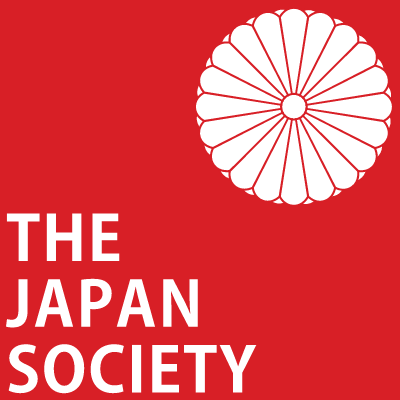Embodied Performance: Warriors, Dancers, and the Origins of Noh Theater

By Matsuoka Shinpei
Translated by Janet Goff
Columbia University Press (2024)
ISBN-13: 978-0231212267
Review by Laurence Green
In Embodied Performance, renowned Noh scholar Matsuoka Shinpei reimagines the origins of Japan’s iconic theater tradition, not as an elite pastime, but as a vibrant fusion of popular culture, religious ritual, and bodily expression. Tracing Noh’s roots in dance, verse, and the provocative chigo (temple boy) culture, Matsuoka reveals a world where courtiers and commoners shared a dynamic performance space. At its center is Zeami, Noh’s most famous playwright, whose artistry - Matsuoka argues - was shaped by both spiritual and physical experience. Brought to English readers through Janet Goff’s skillful translation, this groundbreaking work is essential for anyone interested in medieval Japan, Noh, or the sheer power of art.
These days, even if we have never seen a Noh performance - whether it be in person, or a video clip on YouTube - chances are we may be used to some of its visual trappings. Indeed, one of the most iconic moments of Daniel Craig’s final James Bond film No Time To Die (2021) was its opening sequence featuring a Noh mask-wearing hitman. The striking - sometimes jovial, sometimes terrifying - masks that form a core part of Noh’s aesthetic have in many ways become a form of visual language in and of themselves, core parts of museum collections like those at the V&A in London, and rife throughout other forms of Japanese visual media like anime.
But Noh is of course about more than just the masks - representing a deep seam of performance tradition that dates back centuries. And this is what Matsuoka’s book attempts to get to the heart of; the origins. And like all the best origin stories, Noh’s gestation is a thing of multiplicity. But if one ingredient could be singled out as crucial in this mix, it surely must be religion and spirituality. Characters are often restless spirits, monks, or pilgrims, who seek or offer salvation. Buddhism was key in influencing the patronage of Noh, shaping aspects of its aesthetic such as the sparse staging, deep stillness, and spiritual introspection. Likewise, many Noh plays belong to the mugen Noh genre, where a ghost appears to a monk or traveller to recount past suffering and attain peace through prayer. Matsuoka delves into this ghostly, supernatural quality, devoting a whole chapter to some of the manifestations of this particular sub-category of Noh.
One cannot read this book and not touch on what becomes one of its central themes, that of the chigo (temple boy) culture. Chigo were male youths closely associated with Buddhist temples during the Heian (794-1185) to Muromachi periods (1336-1573). Typically remembered for their religious, ceremonial, and sometimes controversial roles within temple culture, high-ranking monks would form intimate, and often sexual, relationships with chigo. These relationships were widely known and documented, often romanticised in medieval Buddhist literature, but are now recognised and criticised in contemporary discourse as exploitative and abusive.
Matsuoka’s book is candid in acknowledging the multifaceted nature of the chigo, and their appearance as central roles in many Noh plays. Their symbolic innocence and spiritual purity become a core part of the book’s thesis, and in one of its most inspired turns, it links this with passages in some of famed author Mishima Yukio’s novels where chigo figures appear. This neat interdisciplinary turn joins the dots in a through-line of aesthetics that takes us from the world of Noh to the very particular kind of hyper-stylised treatment of bodily beauty that have made Mishima’s novels such landmarks of 20th century literature.
So, with all this in mind, what exactly is “embodied” about the performative practice of Noh? Taking together the various strands presented here, it appears clear that it lies in how spiritual, emotional, and narrative meaning is physically expressed through the actor’s body, in a highly stylised, ritualised way. In Noh, the body becomes the primary medium of transmission - of memory, presence, spirit, and story - often more so than through language or explicit action. Therefore, it is the body - both as visual entity and a tool by which to bring performance into being - that becomes the conveyor of meaning, and in tracing this charged current of physicality back to its very earliest stirrings in historic Japan, we are given a thrilling sense of the timelessness of Noh’s capacity to enthral and move audiences.
A word or two on the textual makeup of Matsuoka’s account of Noh - for those unfamiliar with the nature of Japanese academic writing, it is worth noting that it often varies considerably from the dense, citation heavy nature of what readers may be familiar with from Anglophone scholarship. This is not to say that it doesn’t follow the same degree of rigour, rather, that the tone of the writing follows its own particular rhythm, one that - as in the case of this book - prioritises a more narrative-centric thrust. The overall sense is that of a delivered lecture, and the amiability this lends the writing goes a long way toward making this often esoteric subject more accessible, all aided by a translation that is satisfyingly crisp in its delivery.
That said, for those looking for a bite-size overview of Noh as an artform – a “For Dummies” primer, if you will - before catching a performance on your big Japan trip, this isn’t the book for you. Indeed, much of what it discusses exists at the periphery of Noh as we understand it today. But if, instead, you are looking to deep-dive into the real origins of the artform, and understand its myriad complexities in all their minutiae, then Matsuoka’s book offers innumerable riches; genuinely opening the door to a wholesale reconception of how one might view this rich seam of performance art in Japan, and more widely, how it connects to everything from religion to contemporary literature.

